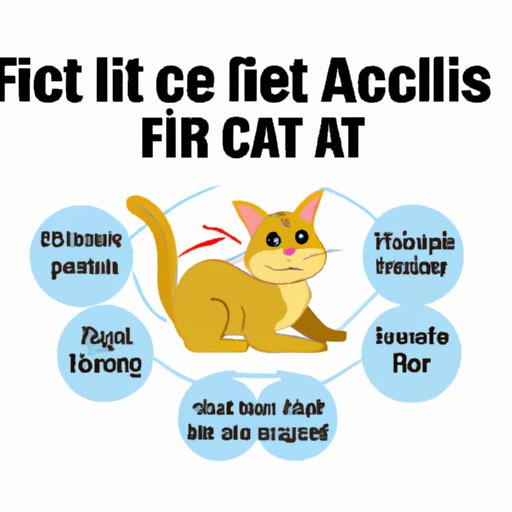
Introduction to the Cat Flea Problem
As a cat owner, dealing with fleas is almost inevitable. Cat fleas are tiny parasites that feed on your cat’s blood, causing discomfort and irritation. They can also be a nuisance to pet owners, as fleas can quickly spread throughout the home. This article will provide a guide to getting rid of cat fleas, including natural treatments, medication-based options, and prevention tips.

A Comprehensive Guide to Getting Rid of Cat Fleas
There are many different products and methods available to eradicate cat fleas, including flea collars, topical treatments, and flea baths. It is important to choose the right approach for your cat’s needs and your personal preferences.
In addition to treating your cat for fleas, it is important to take steps to prevent future outbreaks. This includes treating the environment, using flea collars or medication, and maintaining a clean home.
Natural Ways to Treat Cat Fleas
For pet owners who prefer to avoid harsh chemicals, there are natural remedies available that can effectively control flea infestations. Essential oils, such as lavender and cedarwood, can be used as a natural flea repellent. Diatomaceous earth, a powder made from fossilized algae, can be sprinkled on carpets and upholstery to dehydrate and kill fleas.
Flea-combing is another effective method of natural flea control. By combing your cat’s fur daily, you can remove adult fleas and their eggs before they have a chance to reproduce.
Medication-Based Treatments for Cat Fleas
There are a variety of flea medications available for pet owners, both prescription and over-the-counter. Topical treatments, such as Frontline and Advantage, can be applied directly to your cat’s skin to kill fleas and prevent future infestations.
Oral medications, such as Capstar and Comfortis, work by killing adult fleas and preventing flea eggs from hatching. These medications typically provide faster relief than topical treatments.
Steps to Follow When Your Cat Has Fleas
If your cat has fleas, it is important to act quickly to prevent the infestation from spreading. Symptoms of flea infestations include excessive itching and scratching, hair loss, and skin infections.
To treat your cat for fleas, start by giving them a bath with a flea-repellent shampoo. After the bath, comb your cat’s fur with a flea comb to remove any remaining fleas or eggs. It may also be necessary to administer flea medication to your cat.
To prevent future flea outbreaks, it is important to regularly treat your home and your cat’s environment for fleas.
Flea Prevention Tips for Cat Owners
One of the most effective ways to prevent flea infestations is to maintain a clean home. This includes regularly vacuuming carpets, washing pet bedding, and keeping your cat’s litter box clean.
Using flea prevention products, such as flea collars or medication, can also help to prevent flea infestations. It is important to choose the right product for your cat’s needs and to follow the instructions carefully.
How to Treat Your House for Fleas
If your home has been infested by fleas, it is important to take steps to eliminate them from your environment. This includes thoroughly cleaning carpets and upholstery, washing bedding and linens, and using flea bombs or other pest control products.
It is also important to treat your yard and outdoor areas, as fleas can easily be tracked inside.
Conclusion and Recap
Flea infestations can be a frustrating and uncomfortable experience for both cats and their owners. However, by following the steps outlined in this article, you can effectively prevent and control flea outbreaks.
Whether you choose natural remedies or medication-based treatments, it is important to take proactive steps to keep your cat and your home flea-free. By maintaining a clean environment, using flea prevention products, and treating infestations promptly, you can keep your cat healthy and comfortable.




